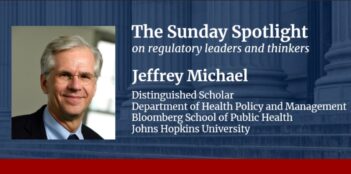
New report examines progress in reducing smoking and makes the case for continued policy efforts.
Have you ever wondered how well anti-smoking campaigns like D.A.R.E. or the World No Tobacco Day work? To mark the fiftieth anniversary of its first, 1964 report on smoking, the Surgeon General recently released a new report examining smoking in the United States. This latest report analyzes how smoking has changed in the United States since 1964 and presents new ideas for addressing smoking in the future.
Smoking remains the most prevalent cause of preventable death in the United States. Since the release of the Surgeon General’s 1964 report, 20.8 million Americans have died prematurely from tobacco-related diseases and accidents. Smoking-related cancer caused 6.58 million of these deaths, and heart-related diseases claimed the lives of another 7.8 million people. The report named secondhand smoke, fires, and pregnancy complications as other causes of death related to smoking.
According to the Surgeon General’s latest report, between 2005 and 2009 smoking accounted for an average $150 billion in lost productivity each year. Approximately two-thirds of this $150 billion resulted from cancers, heart diseases, and pulmonary diseases. Secondhand smoking contributed another $5.7 billion in annual losses.
In addition, the Surgeon General found that smokers today have a higher risk of developing lung cancer than 1964 smokers, partially because modern filters allow for deeper inhalation of cigarette smoke. The report also determined that women are now at equal risk rates with men for lung cancer, chronic obstructive pulmonary disease, and heart disease as a result of smoking, which is a significant increase from 1964. For lung cancer especially, women’s risk from smoking increased ten-fold between 1959 and 2010, while men’s risk doubled.
The report also examined the modern correlation between demographic factors and smoking. Age, for example, correlates negatively with smoking rate. The smoking rate for people over age 65 is 9.6 percent, compared to 22.2 percent for those between 45 and 64. Education also negatively correlates with smoking rates: 31.5 percent of adults without high school degrees smoke, while only 10.4 percent of adults with college degrees smoke.
In addition, the report found that different ethnicities experience drastically different smoking rates. American Indians have the highest rate at 38.5 percent, followed by White Americans at 23.9 percent, African Americans at 22.6 percent, Hispanic Americans at 15.2 percent, and Asian Americans at 8.3 percent.
The report retrospectively examined existing tobacco control policies and programs, both domestic and international, and concluded that taxes, media campaigns, and litigation have reduced smoking in the past fifty years. Programs to help smokers quit have achieved success across multiple demographics.
The report discussed several future strategies to minimize smoking, ranging from reducing nicotine levels in cigarettes to selling tobacco exclusively through a non-profit agency. While the report did not pinpoint a specific strategy for the future, the Surgeon General is optimistic that future regulation and relatively new legislation, such as the 2009 Tobacco Control Act, will reduce smoking.
The Surgeon General’s report also features a short consumer guide that highlights statistics about the dangers of smoking. The report’s website includes links to banners and badges to promote public awareness and resources for those interested in working to decrease smoking.
With this new report, the Surgeon General has now released thirty-two reports related to tobacco use.



